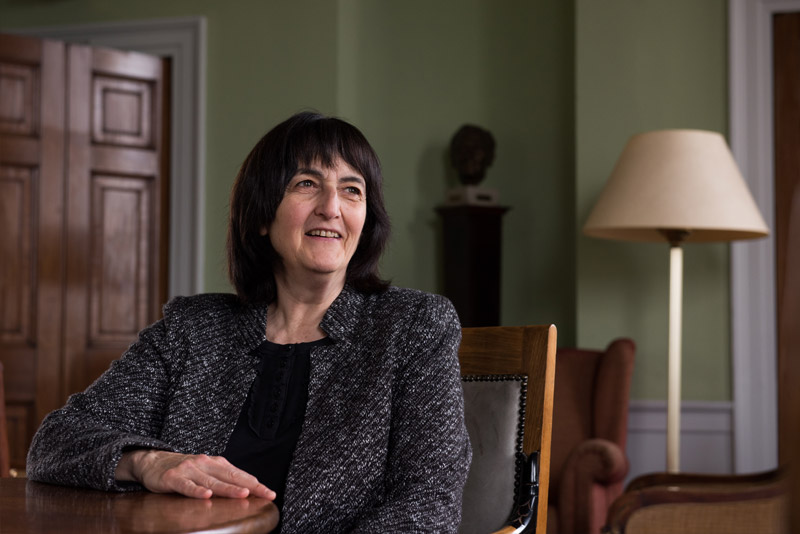Fostering a brighter future
Oxford’s Rees Centre is renowned for the quality of its research, and for the impact that its findings are having on helping vulnerable children and young people in care.
Despite on-going concern from policy-makers, practitioners, foster carers and teachers, the educational attainment of children in care has, for many years, languished well below the national average.
‘At the moment, young people in care score 40% worse than their peers do at GCSE level,’ explains Professor Judy Sebba, Director of Oxford’s Rees Centre for Research in Fostering and Education. ‘That’s what we’re trying to tackle in the long run, because your educational qualifications have a significant impact on your later employment, engagement in crime, housing, and mental health.’
Believing that our work will have an impact on what young people in care want and need is where the greatest satisfaction lies.Judy Sebba
The Rees Centre was established five years ago to help improve the life chances of children and young people in care. Based within the Department of Education, the centre’s research team operate at the interface between social care and the education of looked after children, conducting reviews of existing literature as well as running new studies in order to address issues raised by those involved in the care system.
‘We hit a gap in the research, and have rather quickly become internationally renowned,’ says Professor Sebba. Under her direction, the team have focused their efforts on improving the current evidence base in children’s social care, which has traditionally been underfunded and lacking in rigorous evaluation. ‘It certainly hasn’t been like genome research or climate change work, where’s there’s a history of secondary data analysis, big data sets and longitudinal studies,’ she stresses.

Professor Sebba wasn’t the only one who noticed a disparity between sectors. In 2016, the UK Government unveiled £300 million-plans for a new social work body to improve standards in the profession. Funding is also being made available for a new What Works Centre – an initiative aimed at providing robust, comprehensive evidence to guide decision-making in children’s social care.
‘I think the fact that there is enough interest to commission a What Works Centre shows you that your average policy maker or practitioner who wants evidence just doesn’t know where to get it,’ says Professor Sebba. Thankfully though, things are beginning to change. ‘There’s a lot going on at the moment,’ she continues, ‘and there are lots of opportunities for us to get our research taken more seriously.’
Later this year, the Rees Centre will embark upon a five-year research project focused on attachment awareness – an important concept in the care system, which draws upon the theory that a strong emotional and physical attachment to at least one primary caregiver is critical to a child’s personal development. Supported by a gift of £750,000 from service retailer Timpson Ltd, the programme will target 300 schools, providing the type of robust national evaluation that, until now, has not been possible.
This national programme has only been made possible through the Timpson contribution.Judy Sebba
‘It involves changing the whole culture of the school,’ explains Professor Sebba, ‘and helping staff to understand that they need to look behind the behaviour of the child to recognise what’s happening, not just take it at face value.’ The programme, she hopes, will result in better behaviour, less exclusion, ‘and in turn that should translate into better achievement for those children.’
For Professor Sebba, the impact of the centre’s research is of paramount importance. She’s confident that, thanks to the Timpson Attachment Programme and other initiatives, the Rees Centre can help to initiate a step-change – not only in the quality and extent of the evidence base, but also the use of this evidence. ‘Ultimately,’ she says, ‘the acid test is: is it making a different to young people in care? That has to be the most important thing. That’s really where my heart lies.’